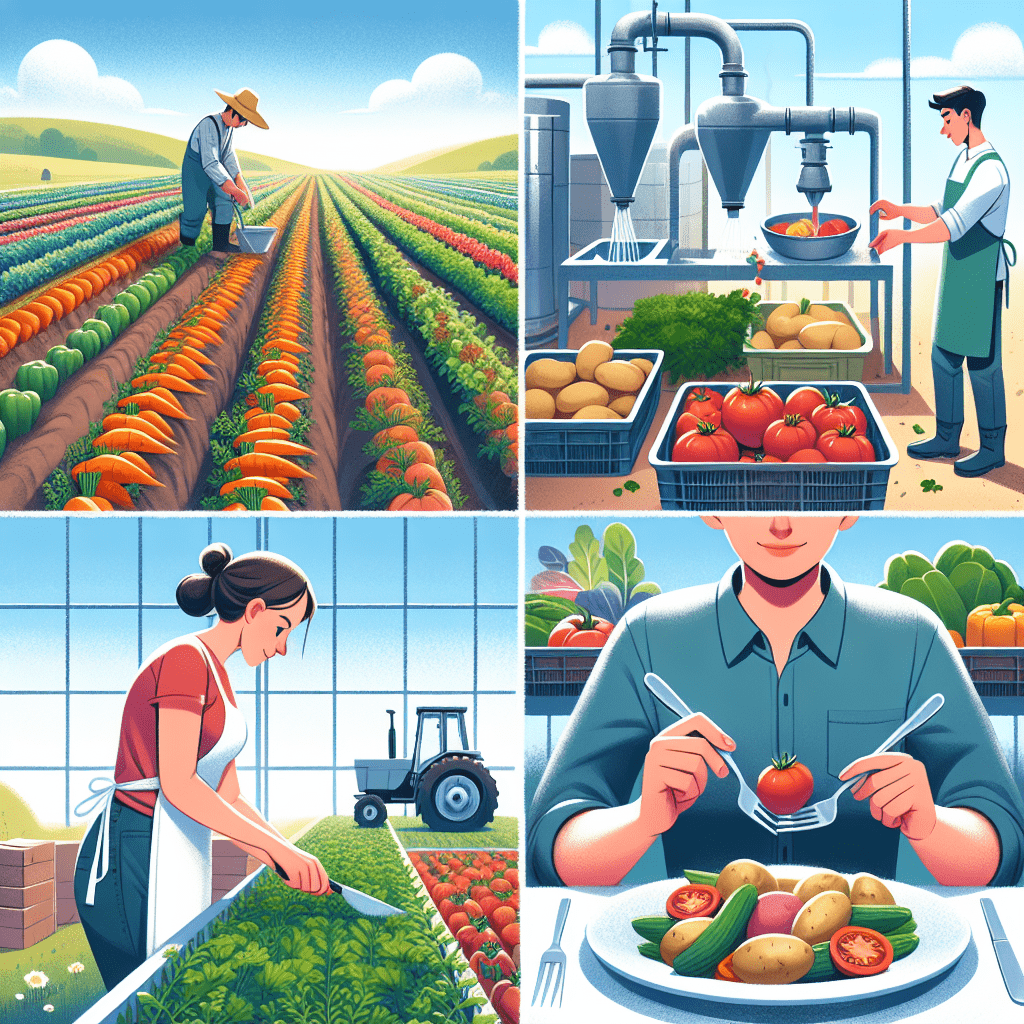Have you ever thought about the journey your food takes from the farm to your fork? Every bite you take has a story behind it, starting from the very beginning on the farm to the moment it reaches your plate. Let’s take a closer look at the fascinating journey of your food.
From Farm to Fork
1. Seeds and Soil: The journey of your food begins with the planting of seeds in nutrient-rich soil. Farmers carefully select the best seeds for their crops, taking into account factors like climate, soil conditions, and growing season.
2. Growth and Cultivation: Once the seeds are planted, farmers nurture their crops through careful cultivation practices. This includes watering, fertilizing, and protecting the plants from pests and diseases. Sustainable farming techniques are often employed to protect the land and preserve its natural resources.
3. Harvesting: When the crops are ready for harvest, farmers gather the fruits of their labor. This involves careful timing to ensure that the crops are at their peak ripeness. Some crops are harvested by hand, while others may be harvested using machinery.
4. Processing: After the harvest, the food undergoes processing to prepare it for distribution. This step may include washing, cutting, packaging, and preserving the food. Different foods require different processing techniques, depending on their type and intended use.
5. Transportation: Once the food is processed, it is transported to distribution centers and markets. This involves a complex network of trucks, trains, ships, and planes that move the food from the farm to various locations around the world. Refrigeration and other technology help to preserve the freshness and quality of the food during transportation.
6. Retail: Finally, the food arrives at retail outlets, such as grocery stores, farmers’ markets, and restaurants. Consumers can then purchase the food and bring it home to enjoy. Many retailers now focus on offering locally-sourced and organic foods to meet the growing demand for transparency and sustainability in the food industry.
Conclusion
The journey of your food from farm to fork is a complex and fascinating process that involves many steps and individuals. By understanding this journey, you can develop a greater appreciation for the food you eat and the hard work that goes into producing it. Remember to support local farmers and sustainable agriculture practices to help ensure a healthy and thriving food system for future generations.
FAQs
Q: Why is it important to know where your food comes from?
A: Knowing where your food comes from allows you to make informed choices about what you eat. By supporting local farmers and sustainable practices, you can help promote a healthier food system and reduce your environmental impact.
Q: How can I support sustainable agriculture?
A: You can support sustainable agriculture by buying locally-produced foods, choosing organic products, and reducing food waste. By making conscious choices about the food you eat, you can help protect the environment and support the livelihoods of farmers.
Q: What is the difference between organic and conventional farming?
A: Organic farming uses natural methods to grow crops and raise livestock, while conventional farming relies on synthetic inputs like pesticides and fertilizers. Organic farming is focused on sustainability and environmental stewardship, while conventional farming often prioritizes efficiency and productivity.
Tip
One simple way to support sustainable agriculture is to join a community-supported agriculture (CSA) program. By subscribing to a CSA, you can receive fresh, locally-grown produce directly from the farm and support small-scale farmers in your area.
#Farm #Fork #Journey #Food
